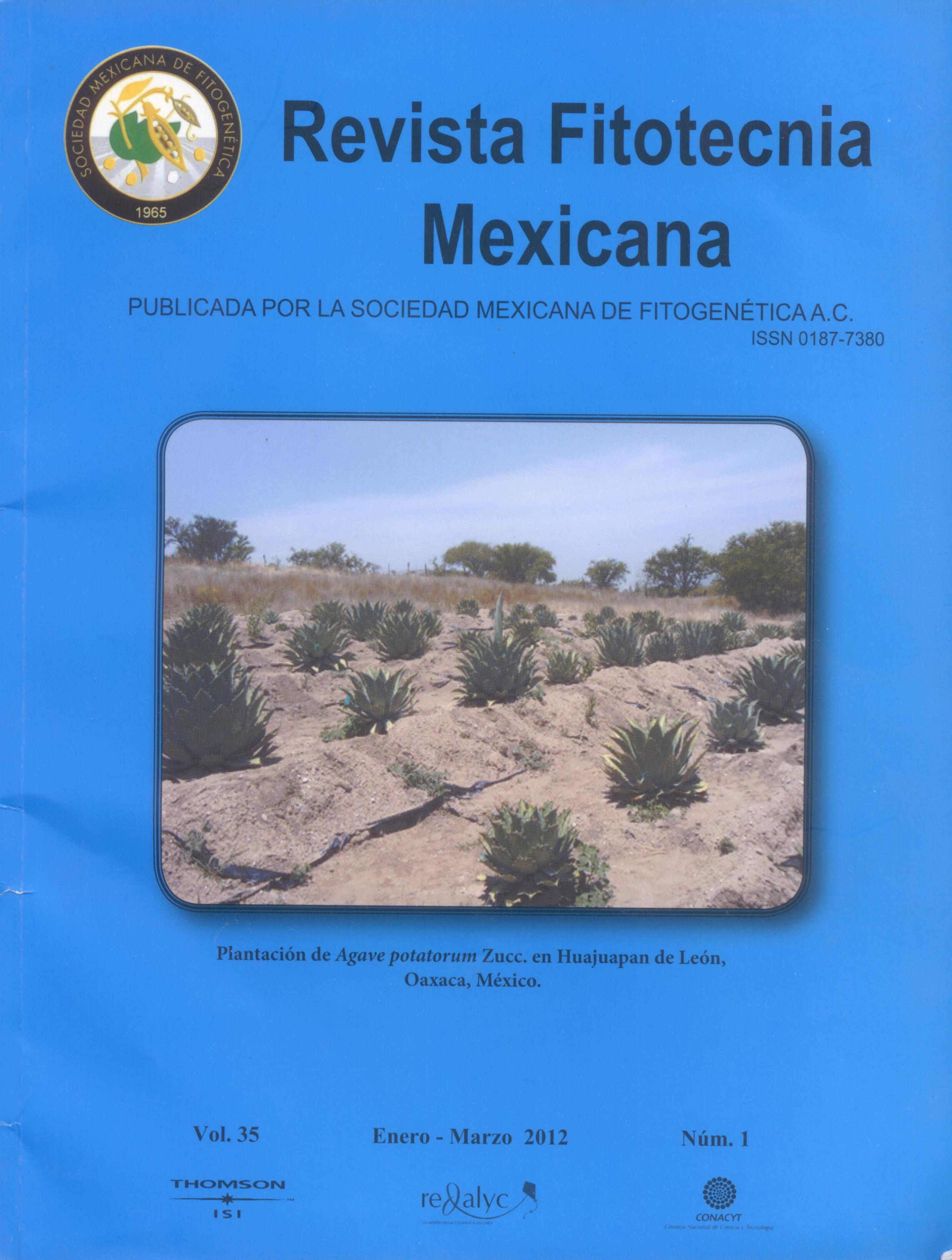GROWTH AND SOLUBLE SOLIDS OF Agave potatorum Zucc. INDUCED BY IRRIGATION AND FERTILIZATION
Main Article Content
Abstract
Because Agave potatorum Zucc. is adapted to the arid environment of the Mixteca oaxaqueña and it is used to produce a mezcal of high demand, its culture is strategic. An experimental trial to study two levels of irrigation (with and without) and four levels of nitrogen (0, 50, 100 and 150 kg of N ha-1) was carried out on plants of 2, 3, 4 and 5 years old in a calcareous Regosol of San Pedro Yodoyuxi, Huajuapan de León, Oaxaca, México. The 32 treatments were evaluated under an experimental design of randomized complete blocks with four replications. Every month the following variables were recorded: content of total soluble solids in leaf (SSL), and increases in plant height (PH), plant diameter (PD), leaf area (LA) and number of unfolded leaves (NUL). Collected data were submitted to analysis of variance and mean comparisons by Tukey test with α = 0.05. It was found that A. potatorum plants increased all their response variables as they grew older. Fertilization with 50 kg of N ha-1 induced an increase in leaf soluble solutes (SSL) in plants 5 years old, but not with higher N rates and neither in plants 2 years old. Under non irrigated conditions both LSS and plant height increased in 5 years old plants, whereas the irrigated conditions improved leaf growth and LSS in 2-3 years old plants.

